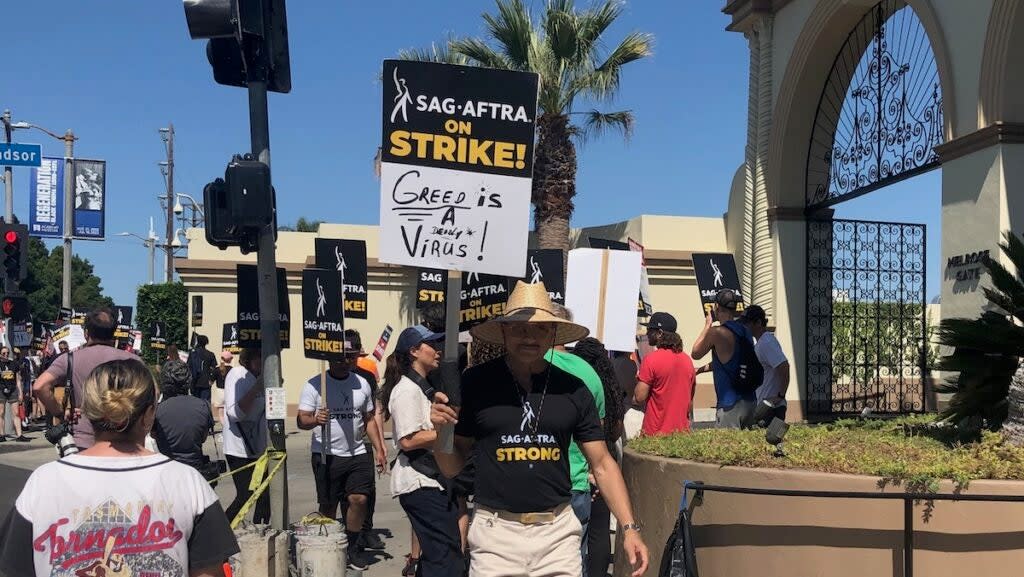The Collapse of Broadcast and Cable Is a Game-Changing Moment in the Hollywood Strikes | PRO Insight

Hollywood writers could not have scripted a better climax to the ongoing labor negotiations gripping the entertainment industry than the news that for the first time in the history of television, viewers spent a majority of time watching premium content off of broadcast or cable.
The announcement from Nielsen that cable and broadcast’s share of TV viewership had plummeted to an all-time low of 49% in July was long coming. Traditional TV has been on the decline for years, but younger generations have accelerated the collapse by stampeding away from cable.
According to the Harris Poll, two-thirds of Gen Z and more than half of Millennials do not have cable today. These younger households are not your traditional cord-cutters. These younger households are full-on cord-nevers – most have never paid a $100 cable bill and never will.
Against this backdrop of historic viewership change, the opportunity now presents itself to the labor negotiators on both sides of Hollywood’s biggest strike in decades to embrace new models for measuring, and ultimately monetizing, the true value of their content.
Independent measurement
The technology exists today to measure, down to the household level, the exact viewership numbers of every single program watched on television, from streaming programs to cable to YouTube. Rather than rely on legacy monetization models, actors, writers, producers and everyone with their hand in the production process can now know exactly how many eyeballs have watched the content they helped create. With the proliferation of third-party measurement providers, any contract today can use independent measurement that does not require streaming platform data to determine the exact number of households that tuned in to any given program.
Screen recognition technology can track the exact number of seconds a program or even a particular actor appears on a television screen. Perhaps the new business model becomes less about raw viewership and more about how many minutes each show or actor’s performance was viewed. Additionally, being able to know exactly how many people are in front of the TV each second a piece of content airs (technology that exists today) means studios can ensure they’re paying for actual viewership of a program and not just dead air.
Not all audiences are equal
When it comes to streaming, and advertising-supported content in particular, not all household audiences are worth the same. Harder-to-reach younger segments may be worth more to an advertiser or a streamer.
Earlier this year, I had the opportunity to share “Ted Lasso” audience insights with actor, creator and writer Jason Sudeikis. I was surprised to find Apple had shared none of the viewership details with the creative team: Sudeikis learned from me that “Lasso” was the No. 1 streaming show for the week, propelled to the top spot by strong Gen Z and Millennial viewership. This audience is a key target for any streamer. The audience-level data available today can help shape front-end negotiations to set clear benchmarks for shared back-end remuneration.
Skin in the game
These new capabilities can enable a future where everyone collectively has skin in the game. Recognizing the sheer tsunami of content being thrown at the wall to see what sticks today, the new model likely calls for the creative side to accept greater risk by stepping back on upfront, guaranteed monetization, while at the same time nudging studios to share more fully in the success with their creative partners in the breakout hits on the back end.
Few could have imagined, for example, that Netflix’s “Wednesday” would be the No. 1 show of this past year. Yet its quirky storytelling and charming cast blew away all expectations.
With the number of days on strike passing into the triple digits this summer and Hollywood production grinding to a halt, television is facing a Dickensian moment. It’s the best of times for consumers with the most diverse and creative content ever available. It’s the best of times for free and ad-supported streaming television services that are seeing strong growth. It is an incredible time to be an advertiser with never before available opportunities to reimagine how, when and where they reach consumers across the diverse streaming ecosystem. On the other hand, as we are seeing play out on the protester-lined streets of Hollywood, it’s the worst of times for anyone, the studios and the creators, left clinging to the legacy business model.
Audiences have left traditional TV behind. Hollywood collectively now has the opportunity to follow those audiences with a new script grounded in modern measurement technology where everyone has the opportunity to share in the benefit of streaming’s positive impact on consumer entertainment.
For all of TheWrap’s WGA strike coverage, click here.
Dallas Lawrence is the chief strategy officer of Telly. Connect with him on Twitter/X (@dallaslawrence).
The post The Collapse of Broadcast and Cable Is a Game-Changing Moment in the Hollywood Strikes | PRO Insight appeared first on TheWrap.

